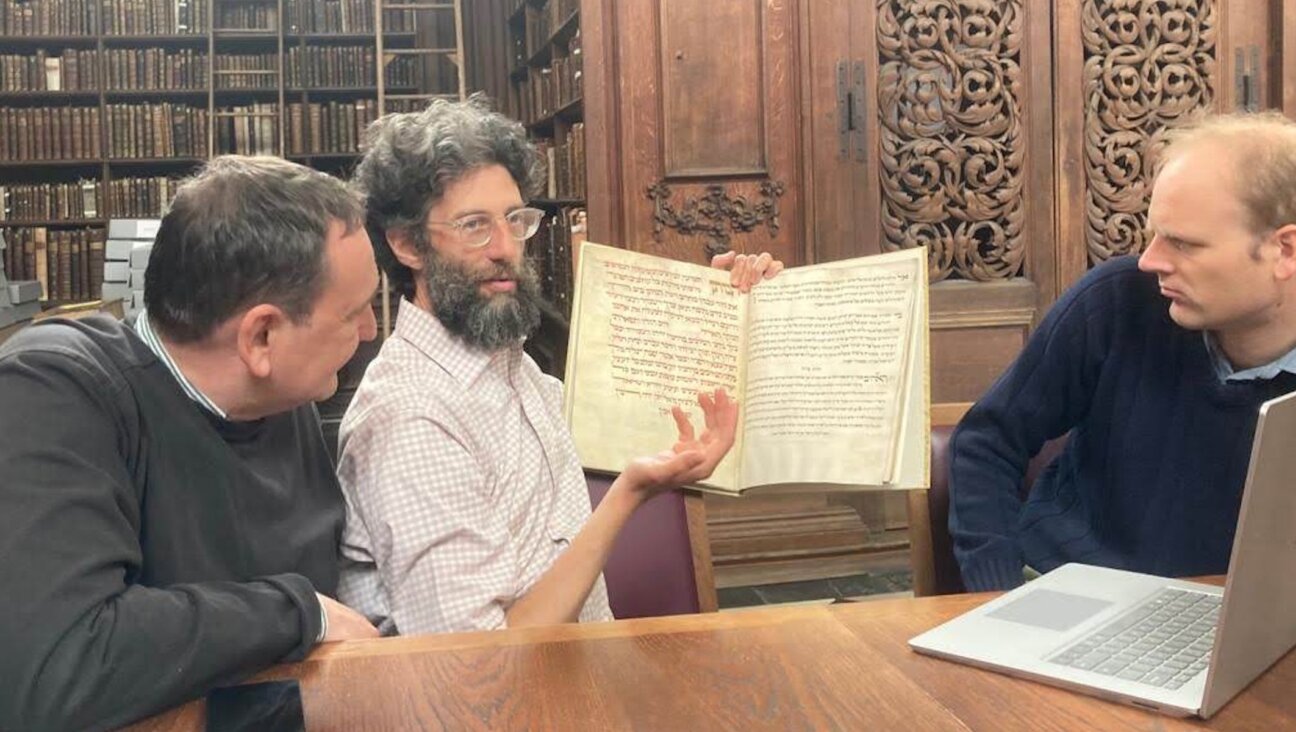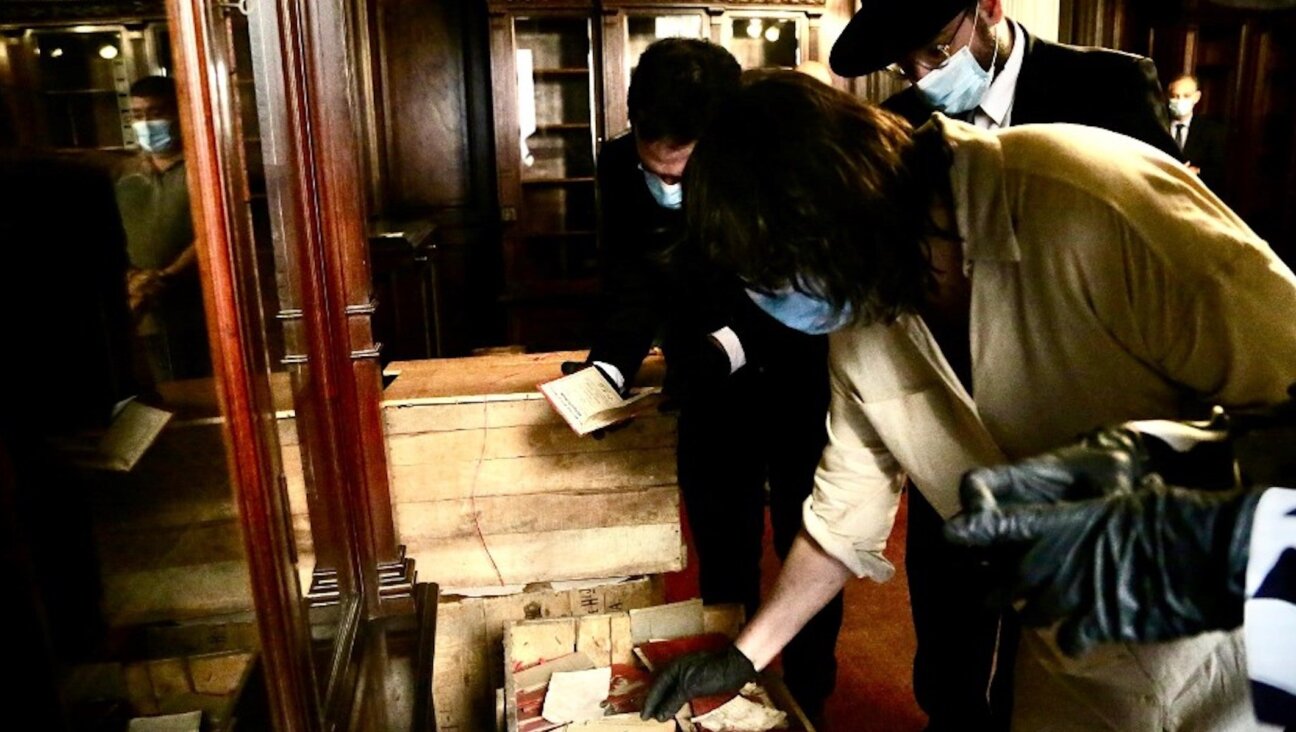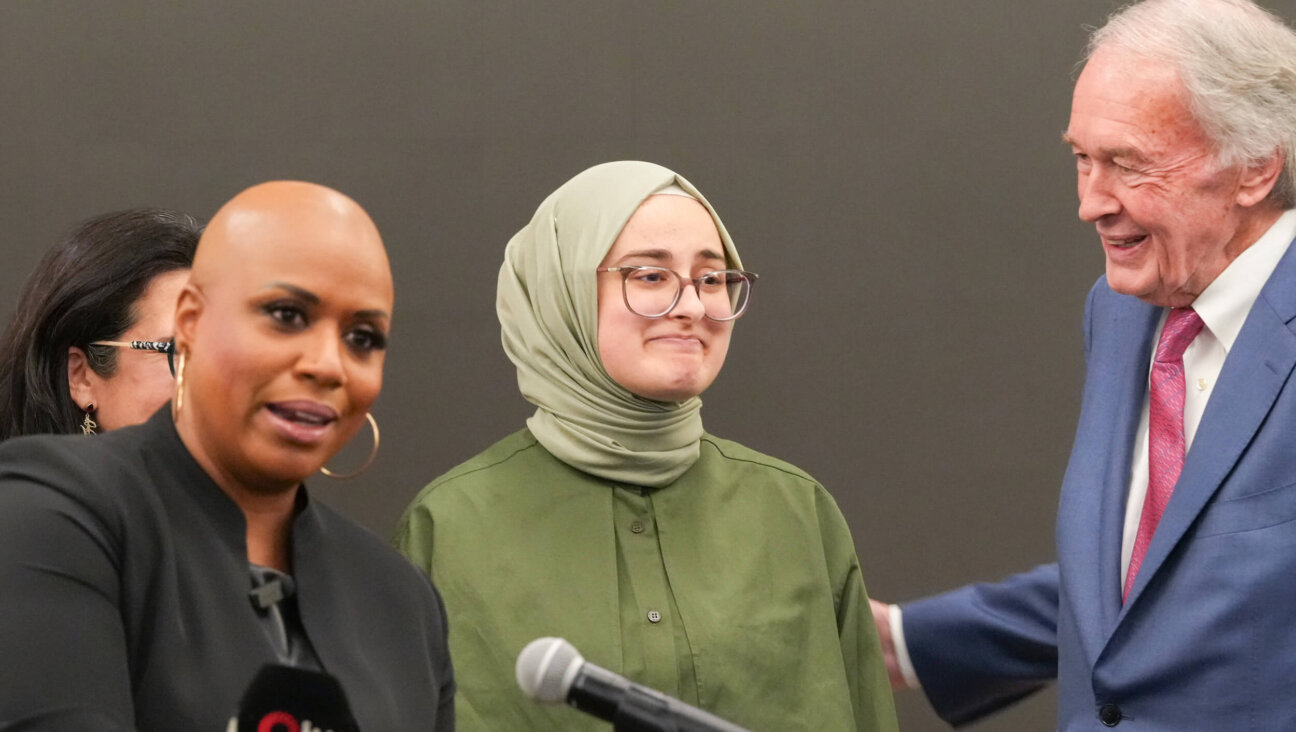Stop Worrying: Details Follow
It takes a special kind of courage to bring Jews good news. We are a people bred on tales of past disaster and impending doom. The very hint that things might be going well for us, that calamity isn’t lurking around the corner, seems to drive some of our brethren to the brink of distraction.
For that reason, if for no other, a debt of thanks is due to the two teams of demographic researchers that produced new findings in recent weeks, both of them showing that America’s Jewish population is not dwindling, as commonly believed, but in fact is growing steadily. The two teams, working separately, using different methods of data collection, both under the sponsorship of impeccably mainstream institutions — the American Jewish Committee and Brandeis University — have concluded that American Jews now number at least 6 million and probably far more.
The new information ought to still the alarms set off three years ago by the publication of the so-called National Jewish Population Survey 2000-2001, which purported to find a community numbering barely 5.2 million. The number was a full 300,000 lower than the 5.5 million found in a similar survey in 1990. That touched off a stampede by rabbis, educators and community planners desperate to stanch the hemorrhage. Traditionalists wagged their fingers, pointing to the losses as proof of the failures of modernity, liberalism and social integration. Opponents of Israel gloated that the numbers spelled the eventual disappearance of Jewish political influence. Israelis crowed that they were, at last, the world’s largest Jewish community.
All of it was, it now appears, based on a statistical error. Jewish numbers weren’t declining. On the contrary, they were rising. That gloomy figure from the 2001 survey can now receive the burial it deserves.
What’s oddest about this latest news is that it’s not really news. The 2001 survey shouldn’t need burying now, because it had pronounced its main finding defunct, or tried to, before it was even released. Controversy had surrounded the study’s methods from its inception. Its release was delayed until 2003 because of doubts about its reliability. The published version cautioned that 5.2 million was probably an undercount, and should not be compared with the 1990 figure of 5.5 million. An outside review, commissioned by the sponsor, United Jewish Communities, and conducted by one of the country’s top polling experts, Mark Schulman, then president of the American Association for Public Opinion Research, found the survey riddled with errors and questionable judgment calls, nearly all of them leading toward an undercount. Nothing more should have needed saying.
But it did need saying. The press and the Jewish public, dazzled by the seeming confirmation of the Jews’ disappearance, ignored the fine print and had a field day. A handful of Israeli scholars and officials, convinced they’d found final proof of the Zionist prophecy, picked up the ball and haven’t stopped running with it since then. Virtually every scholar of American Jewish population studies understood that the number was wrong, but none of them wanted to descend to the level of polemics. Consequently, the doomsayers and triumphalists had the field to themselves. Maybe now, as the scholarly field begins to speak out, the hysteria can be laid to rest.
Most right-thinking folks will find the entire controversy mildly comical, and a trifle dull. While the scholars argue, American Jews are busy living their lives, doing their jobs, celebrating with their families, saying whatever prayers they say, trying to do right and to pass their values along to their children. They don’t need experts in New York or Jerusalem to tell them who and what they are. It is they who are, in the end, the truest — the only — guarantee of Judaism’s survival and continued thriving.
If the new research finally gives those Jews the credit they deserve for the choices they make every day, then it’s worth every penny.
The Forward is free to read, but it isn’t free to produce

I hope you appreciated this article. Before you go, I’d like to ask you to please support the Forward.
Now more than ever, American Jews need independent news they can trust, with reporting driven by truth, not ideology. We serve you, not any ideological agenda.
At a time when other newsrooms are closing or cutting back, the Forward has removed its paywall and invested additional resources to report on the ground from Israel and around the U.S. on the impact of the war, rising antisemitism and polarized discourse.
This is a great time to support independent Jewish journalism you rely on. Make a gift today!
— Rachel Fishman Feddersen, Publisher and CEO
Support our mission to tell the Jewish story fully and fairly.
Most Popular
- 1

Fast Forward Ye debuts ‘Heil Hitler’ music video that includes a sample of a Hitler speech
- 2

Opinion It looks like Israel totally underestimated Trump
- 3

Culture Is Pope Leo Jewish? Ask his distant cousins — like me
- 4

Fast Forward Student suspended for ‘F— the Jews’ video defends himself on antisemitic podcast
In Case You Missed It
-

Fast Forward For the first time since Henry VIII created the role, a Jew will helm Hebrew studies at Cambridge
-

Fast Forward Argentine Supreme Court discovers over 80 boxes of forgotten Nazi documents
-

News In Edan Alexander’s hometown in New Jersey, months of fear and anguish give way to joy and relief
-

Fast Forward What’s next for suspended student who posted ‘F— the Jews’ video? An alt-right media tour
-
Shop the Forward Store
100% of profits support our journalism
Republish This Story
Please read before republishing
We’re happy to make this story available to republish for free, unless it originated with JTA, Haaretz or another publication (as indicated on the article) and as long as you follow our guidelines.
You must comply with the following:
- Credit the Forward
- Retain our pixel
- Preserve our canonical link in Google search
- Add a noindex tag in Google search
See our full guidelines for more information, and this guide for detail about canonical URLs.
To republish, copy the HTML by clicking on the yellow button to the right; it includes our tracking pixel, all paragraph styles and hyperlinks, the author byline and credit to the Forward. It does not include images; to avoid copyright violations, you must add them manually, following our guidelines. Please email us at [email protected], subject line “republish,” with any questions or to let us know what stories you’re picking up.














